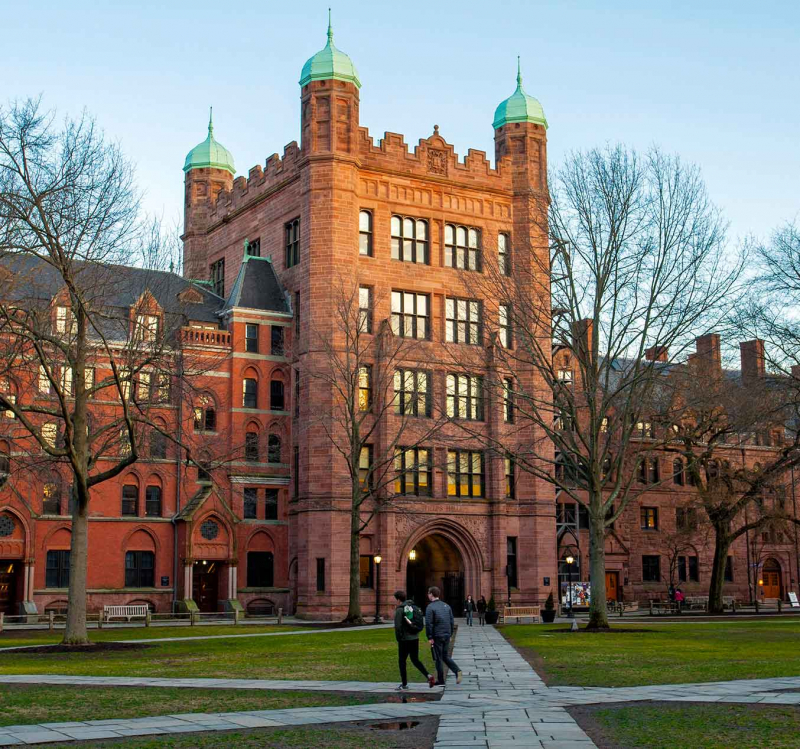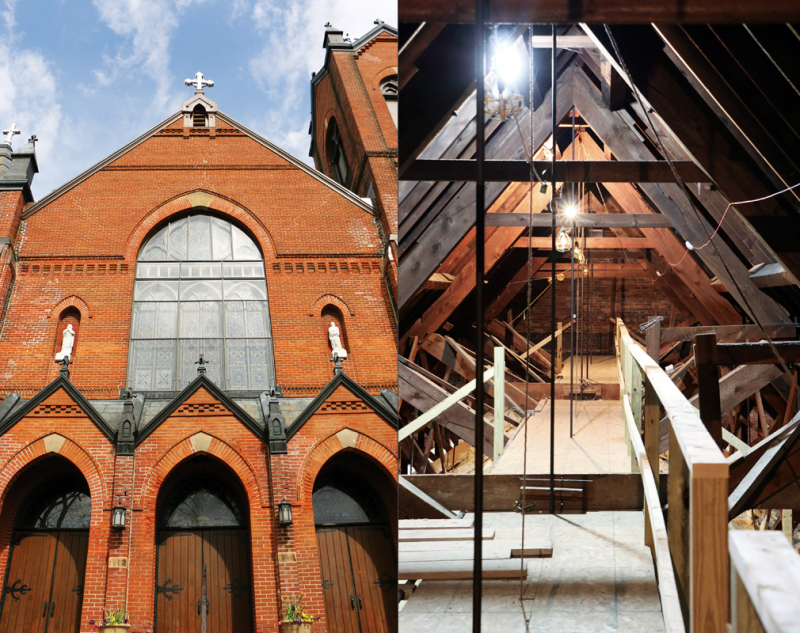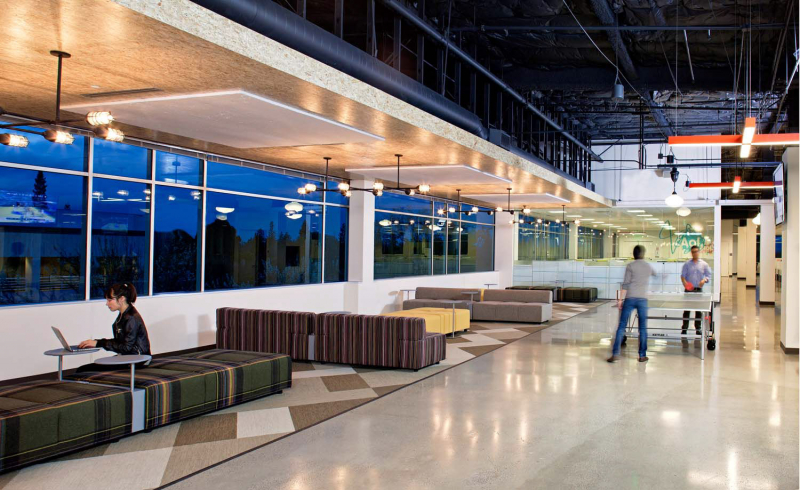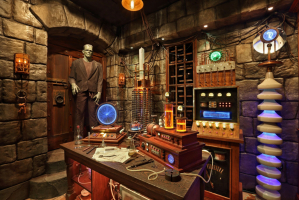Top 10 People Who Secretly Lived in the Most Unexpected Places
In most cases, where someone lives is quite predictable. In the majority of Western nations, you can choose to live in a house or an apartment. There are ... read more...people who live in tents, trailers, caverns, and trees, among other types of housing. The majority of the places you'd consider to be "homes" can still be counted on one hand. A small number of people, however, have chosen to live in some extremely unusual locations.
-
Michael Townsend, who logged four years inside a mall while working with numerous buddies, holds the record for the longest stint in a place where no one should be able to live. The real procedure is both astonishing and fascinating. They constructed a real chamber with cinder-block walls and an access utility door. They created a 750 square foot apartment there. Even a china cabinet was present. Since they were unable to add plumbing, the only thing that was lacking was running water, but since it was located in a mall, they were never far from a restroom.
In essence, the area they occupied was a design defect. In essence, the area they occupied was a design defect. The apartment was constructed on unused space because the mall's floor design utilized all of the adjacent space. The team had plans to build a second bedroom and install wood floors, among other things, but mall security found them and busted them. Townsend was given a lifetime ban from the mall after being charged with trespassing.

https://pbn.com/ 
https://trip101.com/ -
Veterans Stadium in Philadelphia was once one of the most well-known professional sports arenas in the country. Both the Philadelphia Phillies and the Philadelphia Eagles previously called it home. Tom Garvey claimed that he also called it his home.
In 1979, Garvey oversaw the stadium's parking lot. He began sleeping in an abandoned concession stand and turned it into an apartment, where he resided for nearly three years. He was unmarried and had few duties beyond word. No one questioned why he stayed so long because he was constantly at work.
On the 200 level by Gate D, he set up residence. All that would be seen if anyone opened the door would be crates. However, if you entered his Astroturf-covered, 60 by 30 foot space through a corridor, you would discover a fridge, bed, sink, stereo, and other amenities that made it livable.

https://fineartamerica.com/ 
http://www.stadiumpostcards.com/ -
Storage units have been around for ages but got a big boost in the early 2010s with shows like Storage Wars. Suddenly, they were a big deal and for more than just finding treasures. People started using them as homes. Back in 2017, a Reddit user known as 007craft detailed how he made a storage unit a home for a couple of months. The monthly fee was just $200, so it was clearly better than rent and it already had all of his possessions in it.
He had a bed, a TV, toaster oven and hot plate, as well as a fridge. He ran power cables and even an antenna to boost his cell signal, then just had to worry about keeping it down so no one would notice him.
To improve his cell signal, he ran power cables and even an antenna. He then only had to worry about keeping everything quiet so no one would see him. According to one version of the event, after finding a legitimate apartment, the man moved out on his own, but U-Haul claims they actually caught him and ejected him.

https://southpace.com/ 
https://mavericksteelbuildings.com -
One guy set up a tent in the hills close to campus, and there were several students who couldn't afford housing and "lived" in the student lounges while taking showers in the recreation center. But this account of Allan Kornfeld, who spent 1963 and 1964 living in a Yale ventilation shaft, is the closest Lazlo Hollyfeld's covert hideout in the venerable 1985 film Real Genius.
For this one, let's go way back to 1964, when it seemed like student housing was just as problematic as it is today. In this instance, a Yale University student had been residing in a ventilation shaft at the institution for the full seven months. Wallpaper with a brick design was employed by Allan Kornfeld to conceal his entrance. He used an electric blanket to keep warm during the cold. His residence was a four-foot-wide, 40-foot-long air tunnel with a ten-foot ceiling that provided ventilation for squash courts.
His tuition covered meals, but it didn't cover accommodation, and he didn't have enough money to rent a room on his own. As a result, he ate on campus. He had a mailing address away from campus and had buddies answer any phone calls for him.

http://famouswonders.com/ 
https://www.usnews.com -
What do you currently have in your closet? There must be hundreds of dollars' worth of unsold clothing there, according to many people. You might also have some shoes or sentimental stuff. Can you, however, vouch for the fact that nobody else resides there? And before you respond, "of course," keep in mind that at least one person has previously discovered a stranger residing in their closet.
A woman in Japan was detained in 2008 after spending an entire year living in a stranger's closet. When food started to disappear, he became suspicious and set up some security cameras to keep an eye on his home while he was away.
She was curled up on a shelf in the closet when the police arrived and discovered that all the windows and doors were closed. She claimed that she entered the building illegally a year ago when he left it open and remained there ever since.
https://www.toptenz.net/ 
https://designyoutrust.com/ -
Undisputedly, Walmart is a major player in the retail industry despite a history of dubious business practices. In the first quarter of 2022, they generated nearly $141 billion in sales. It makes sense given that the shops essentially stock everything. That being the case, it may come as no surprise that several people have attempted to live in one.
A 14-year-old moved into a Texas Walmart in 2013, but he was only able to stay there for a short time. In order to avoid being seen by customers when the store closed for the evening, he constructed hiding areas behind objects like strollers and stacks of toilet paper. He also dressed differently every day to avoid coming off as untrustworthy.
He was eating food from the grocery area of the narrative, as you might anticipate, and he made the disgusting decision to wear diapers so no one would see him use the restroom. No information was provided as to how long the man had been living in the Walmart ducts, but it was discovered elsewhere in Texas. Let's just say that a Walmart in Texas must be a pretty cozy location.
https://www.capitalgazette.com 
https://stacker.com/ -
When you think about it, it's completely realistic that something or someone could be lurking in an attic in a horror movie. Most folks don't often visit their attic. There may be numerous furnishings and other items to keep you engaged, as well as frequent easy access to it. That may have contributed to William Baker's decision to live in the church's attic in Arlington, Virginia's St. Ann Roman Catholic Church. Baker was able to live there for a remarkable three years because it was a church attic rather than an attic in a house. It was also even less busy because it was an attic.
With clothes, a guitar, and a cooler filled with food he had stolen from the church, Baker, who was homeless, had managed to create a comfortable haven for himself. For those three years, it actually felt like people's only inkling that something wasn't right was a lack of food, but that certainly wasn't enough to persuade them that they had a squatter.
Through tiles in the ceiling, Baker entered the attic. He would use a ladder to ascend, then raise it afterward to conceal his actions. Nobody became aware of the situation until a repairman showed up at an unexpected hour and heard noises upstairs. After calling the police, Baker was accused of trespassing.
https://volumeone.org/ 
https://www.messynessychic.com/ -
You know the expression, "You should live to work, not work to live"? A man by the name of Terry K. confused those two somehow and ended up residing in his place of employment. The 500 days he did, it lasted. The man described how he moved behind his desk in an office building after renting out his actual Venice Beach condominium in his Salon article. Before anyone arrived, he would get up, hit the gym, and take a shower. To give the impression that he had been actually commuting, he occasionally would even arrive home a little bit later.
Why would someone carry out such a deed? Money. Terry wasn't ever at his apartment because he worked 60 hours per week. He was having trouble, had medical bills and student loans. In order to save money, he rented out his home instead of living there himself. He was able to save $20,000 because the neighborhood's average monthly rent at the time was $1,300. hundreds of hours spent traveling as well. Why did he then stop? He lost his job when the business failed.

https://www.tripsavvy.com/ 
http://www.thousandwonders.net/ -
The Covid-19 pandemic significantly altered many people's daily lives. People have done everything—shelter in place, work from home, you name it. Many of us become much more comfortable in our own houses as a result of our phobia of leaving our homes. Aditya Singh, though, found that things didn't quite go his way. Singh stayed put throughout the height of the pandemic because he was so terrified of contracting the disease. But he was in Chicago's O'Hare International Airport.
Singh was able to remain largely unnoticed for three months in a gated area of the airport. He had taken a flight in October 2020, and it wasn't until the middle of January that he was discovered. With the help of a face mask, probably no one realized that he wasn't the man he was pretending to be as he was roaming around with a stolen security credential. He received nourishment while he was there from other travelers.
Singh had been studying for a master's degree in America and had no prior convictions. He was supposed to be going back to India when he was apprehended. He was only in the secure area because he had arrived there on his initial flight, and a judge found him not guilty of any felony charges in October 2021. He had only broken one rule—using an ID that wasn't his—because he was afraid to leave.
https://www.hok.com 
https://aerolatinnews.com/ -
We're going to go through time to a long-ago location called AOL. Recall them? America Online used to be highly popular on the internet, and they frequently delivered unwanted CDs to everyone. In addition, they maintained a sizable, opulent headquarters in Palo Alto, California. This location had a gym, a wash, sofas, and a café because tech companies like to pack their workplaces with facilities. Basically, everything you would require to live comfortably inside the structure, which is what Eric Simons chose to do.
Simons stayed at AOL for two full months in 2011 when he was 19 years old. He didn't work there, but he ate their meals, slept on their couches, and spent his days exploiting their resources to launch his own business. Instead, he had signed up for a "start-up incubator program," which was housed in the structure and gave him access. He simply remained after the show was over.
He was able to reduce his living expenses for one month to $30, and that was only possible because he went out to eat at McDonald's after growing tired of the cereal and ramen provided by AOL. Only after a security officer accidentally caught him did his living situation change.
http://www.home-designing.com 
https://biz.loudoun.gov/































